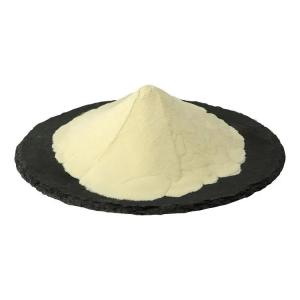News list
News Center
Hot Product
News
Awareness of phosphoric acid in global nutrition
Time:2025-10-31
1. Introduction
Phosphoric acid, a common source of phosphorus, is widely used in the global food and beverage industry. Beyond its industrial applications, it plays an important role in discussions about nutrition, food quality, and dietary balance. As nutritional awareness grows worldwide, understanding the impact and presence of phosphoric acid in the food system has become an essential part of evaluating modern diets.
2. Phosphoric Acid as a Source of Phosphorus
Phosphorus is an essential mineral required for cell growth, bone structure, and energy metabolism. Phosphoric acid contributes to dietary phosphorus intake when used as an additive or preservative in foods and drinks. However, while natural phosphorus from meat, grains, and dairy supports nutritional needs, excessive intake of phosphorus from additives like phosphoric acid may disrupt nutrient ratios, particularly those involving calcium and magnesium.
3. Global Usage in Food and Beverages
Phosphoric acid is commonly added to carbonated drinks, processed cheese, and bakery products to enhance flavor and stability. Its global use reflects consumer demand for taste and texture consistency. Yet, as diets become more industrialized, there is growing interest in how these additives influence long-term nutritional adequacy and health. This awareness drives new research and reformulation efforts in many countries to achieve better nutrient balance.
4. Growing Nutritional Awareness Worldwide
Across regions, nutrition organizations and health authorities are emphasizing the need to monitor phosphorus intake from both natural and artificial sources. Educational campaigns, food labeling systems, and dietary guidelines increasingly highlight the importance of recognizing ingredients such as phosphoric acid. This growing awareness helps consumers make informed choices about their diets and encourages food producers to adopt responsible use of phosphorus additives.
5. Policy and Research Developments
Global nutrition policies are gradually integrating phosphorus management into broader nutrient monitoring frameworks. Research initiatives supported by international organizations aim to assess phosphorus consumption patterns and their effects on diet quality. Countries are also promoting transparency in food composition data, ensuring that phosphoric acid and similar compounds are clearly identified in nutritional evaluations.
6. Conclusion
Awareness of phosphoric acid in global nutrition reflects a broader movement toward informed, sustainable, and balanced eating practices. By recognizing its role in food production and nutrient intake, researchers, policymakers, and consumers can work together to promote dietary balance and improve the overall quality of nutrition worldwide.
Phosphoric acid, a common source of phosphorus, is widely used in the global food and beverage industry. Beyond its industrial applications, it plays an important role in discussions about nutrition, food quality, and dietary balance. As nutritional awareness grows worldwide, understanding the impact and presence of phosphoric acid in the food system has become an essential part of evaluating modern diets.
2. Phosphoric Acid as a Source of Phosphorus
Phosphorus is an essential mineral required for cell growth, bone structure, and energy metabolism. Phosphoric acid contributes to dietary phosphorus intake when used as an additive or preservative in foods and drinks. However, while natural phosphorus from meat, grains, and dairy supports nutritional needs, excessive intake of phosphorus from additives like phosphoric acid may disrupt nutrient ratios, particularly those involving calcium and magnesium.
3. Global Usage in Food and Beverages
Phosphoric acid is commonly added to carbonated drinks, processed cheese, and bakery products to enhance flavor and stability. Its global use reflects consumer demand for taste and texture consistency. Yet, as diets become more industrialized, there is growing interest in how these additives influence long-term nutritional adequacy and health. This awareness drives new research and reformulation efforts in many countries to achieve better nutrient balance.
4. Growing Nutritional Awareness Worldwide
Across regions, nutrition organizations and health authorities are emphasizing the need to monitor phosphorus intake from both natural and artificial sources. Educational campaigns, food labeling systems, and dietary guidelines increasingly highlight the importance of recognizing ingredients such as phosphoric acid. This growing awareness helps consumers make informed choices about their diets and encourages food producers to adopt responsible use of phosphorus additives.
5. Policy and Research Developments
Global nutrition policies are gradually integrating phosphorus management into broader nutrient monitoring frameworks. Research initiatives supported by international organizations aim to assess phosphorus consumption patterns and their effects on diet quality. Countries are also promoting transparency in food composition data, ensuring that phosphoric acid and similar compounds are clearly identified in nutritional evaluations.
6. Conclusion
Awareness of phosphoric acid in global nutrition reflects a broader movement toward informed, sustainable, and balanced eating practices. By recognizing its role in food production and nutrient intake, researchers, policymakers, and consumers can work together to promote dietary balance and improve the overall quality of nutrition worldwide.


 CN
CN





